A visit to the Keystone Truck & Tractor Museum in Virginia
Home of the Heavy-Duty
08/11/2021


There’s something for everyone at the sprawling Keystone Truck & Tractor Museum in Colonial Heights, Virginia. Despite its name, in addition to the 185 tractors and 100 trucks, there are about two dozen classic cars along with 10 fire engines and a handful of motorcycles, scooters, and bicycles.
The collection is rounded out with 2,000 toy trucks, plus petroliana and Americana that includes antique gas pumps, vintage tools, tobacco farming memorabilia, and a treeful of chainsaws.

The museum is the result of the collecting passion of Keith Jones, who started out with his four brothers in the no-stoplight town of Abilene, Virginia. Their dad operated a sawmill, so by Keith’s teen years he was hauling lumber and also working at the family’s filling station. The Jones siblings went on to found trucking company Abilene Motor Express, which they sold a few years ago.
I’ve visited the Keystone Truck & Tractor Museum several times over the past few years and am amazed to see that each time the museum has grown larger, and sure enough, at 120,000 square feet in 2021, it’s even bigger still. Keith’s first tractor, which he later restored, was a 1950 John Deere M, purchased in 1997 from his late uncle’s estate. He says that’s when he got the “collecting fever.” He’s still running hot as he keeps acquiring new vehicles and sharing them with the public.

Keith opened the museum in 2010. Until then his collection was stored in trailers. He recalls, “We thought we’d need about half the space we have here. The collection is growing, so we might have to do some rearranging.”
A visit to the Keystone Truck & Tractor Museum in Virginia. One of the most popular acquisitions is a veritable time capsule that sits out front attracting traffic whizzing by on Interstate 95: a vintage 1951 car hauler with four 1956 Chevys perched on top. When Keith found it, the trailer had been sitting outside for 40 years.

Greeting visitors as they venture inside the museum is row upon row of tractors in various shades of green (John Deere, Waterloo, Oliver, Case, Massey-Harris), amber (Minneapolis-Moline, Allis-Chalmers), and red (McCormick, Moline, Farmall, Cockshutt, International Harvester, Graham-Bradley, Thieman) making a bird’s-eye view of the display floor look like a colossal traffic signal wrought in farming equipment. The passel of Fordson tractors in battleship gray, set off to the side, look out of place in this polychromatic array.
The 1932 Massey-Harris GP with a 25-horsepower L-head Hercules engine boasted a revolutionary feature for the time—four-wheel drive. But, despite this technological advance, it still had a hand-cranked starter.

With its hump on the body, a 1959 Massey-Ferguson 65 looks a bit like a camel. The hump hides the LPG tank that was more popular on tractors down south. The 1949 McCormick O-4 has a streamlined appearance due to its role as an orchard tractor—in order to prevent getting clogged in fruit tree branches there are metal skirts over the wheels and cowlings over the fuel caps.
One of the most popular tractors is the 1938 Minneapolis-Moline UDLX. It boasts a car-like appearance, with an enclosed cab and amenities, including a radio, heater, and clock. The slogan was “farm during the day, drive to town at night.” Hard to believe with all that bling it wasn’t a sales success. But the Great Depression was still going on and according to museum guide Logan, “It was too expensive, and farmers thought you were a wuss if you had a cab on your tractor.”

Another 1938 is a Graham-Bradley Standard Model 104 built by Graham-Paige. With its swept-back nose and stylish side louvred panels, it looked ready to race. It became known as a “rich man’s” tractor and enjoyed an all-too-brief history. They were sold exclusively through Sears, Roebuck and Company, but were removed from the catalog by 1940.
The 1918 Moline Universal Tractor is referred to as the first row-crop tractor. The standard equipment of electric lights, rheostat throttle, and electric starter were quite advanced for that period. The museum purchased a container of tractors from Europe that included a few marques more known for sports cars, including a 1957 Porsche P111, which was licensed by Mannesmann AG, and a 1962 Lamborghini Model 1R.

The mammoth German-built 1939 Lanz Bulldog single-cylinder hot-bulb semi-diesel engine has one of the more archaic starting systems. It’s a 20-minute process that involves a blowtorch, along with the driver taking the steering wheel and shaft out of the cabin and inserting it into the side of the engine to crank it up. It’s not exactly conducive to quick startups.
Although Keith’s first love was tractors, he is a trucking guy, so there’s a wide variety of trucks to choose from including a 1936 International C-30 4x2, 1939 Mack BM in Yellow Transit Co. livery hauling a 25,000-pound payload 1935 Fruehauf trailer, a 1945 Dodge WH 47 tanker, a 1954 Autocar DC 75, and a 1973 Chevrolet 90 6x4.

One of the great independent truckmakers out of Detroit was the Federal Motor Truck Company. It produced the 1941 Federal Model 24 4x2 on display at Keystone that was operated by the American Thermos Bottle Company of Norwich, Connecticut.
A real rarity is the 1957 Diamond T “Pig Nose Truck,” so named because the owner wanted more power and added an extra engine to the front, giving it the appearance of a snout.
The handful of campers include perhaps the coolest camper of all, a 1969 Diamond REO HD275 Trend chassis with a cab made out of Royalex fiberglass hauling a 22-foot Country Wagon camper. Since the camper is on the elevated flatbed of a truck, you’ll need a stepladder to climb inside, but you’ll be the king of any KOA campground in this behemoth.
Classic cars are not left out, with the focus mainly on 1950s brands and 1960s muscle cars, including a stable of 1955-’57 Ford Thunderbirds and a customized 1967 Chevrolet.

There is also a popular casual restaurant on site for down home southern diner food.
From Washington, DC, the museum is a 2½-hour straight shot south on I-95 (about 20 minutes south of Richmond, Virginia) and is open seven days a week. For more information, go to keystonetractorworks.com.


On this episode of Repair2Rev, join us as Riley and Dane share invaluable tips and tricks on tackling one of the most crucial aspects of vehicle maintenance: the brakes. From the essential do's and don'ts to the step-by-step process of replacing and upgrading front disc brakes, you'll learn everything you need to know to keep your ride safe and reliable.
As they move to the rear of the truck they delve into the intricate world of rear drum brake systems, demonstrating the art of rebuilding and restoring this often-overlooked component of classic trucks. And to ensure your truck stops on a dime, they'll wrap up the episode with a comprehensive guide to bleeding the brake system, leaving no stone unturned in their quest for peak performance. Knowledge gained here will help you find your bargain buy without the anxiety of lacking repair tips. Hemmings is the ultimate destination for finding your perfect ride. Head to Hemmings.com to register and start your search today.
The British motor industry is well represented on this week’s round up of successful sales on Hemmings.com. The strongest listing went to an LS V8-powered 1997 Land Rover Defender 110 custom that outperformed the market and looked to be able to well outperform a stock 110. A 1978 Aston Martin AM V8 found a new home via auction, the same fate experienced by a V12-powered 1972 Jaguar XKE Series 3 roadster. The original Jeep Grand Wagoneer was perhaps the first luxury SUV and the 1988 example sold on Hemmings.com featured low-mileage and excellent overall condition. There are few muscle cars are instantly recognizable as a Carousel Red Pontiac GTO Judge, like the 1969 model detailed below. Finally, we look at a restored 1913 Ford Model T Runabout sold from a Canadian-based collection.
For the week of May 12 through May 18, a total of 61 listings crossed the Hemmings Auctions block. Including Make Offer listings of previously ended auctions, a total of 40 cars were sold, resulting in a net 66% sell-through rate. An additional 29 cars were sold via direct Make Offer listings.
You can keep abreast of the latest consignments by subscribing to the daily Hemmings Auctions email newsletter.
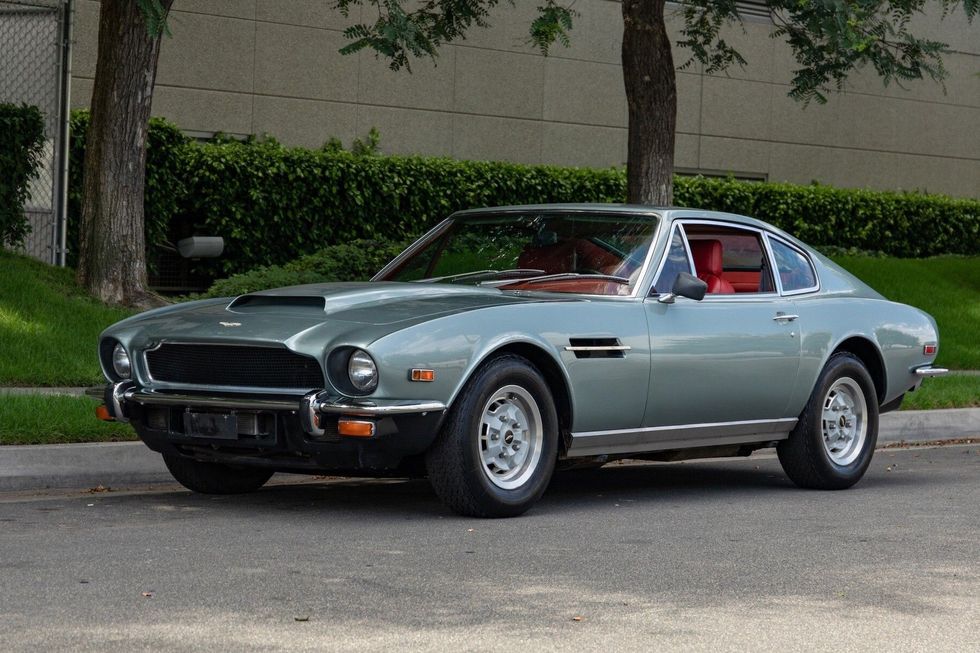
Reserve: $80,000
Selling Price: $84,000
Recent Market Range: $45,000-$80,000
Aston Martin produced some version of its V8-powered saloon from 1969 through 1989, though we are more likely to refer to the body style as a coupe on this side of the Atlantic. A beefy 5.3-liter DOHC V8 with multiple carburetors and a stout Chrysler-sourced TorqueFlite automatic very much gave the models a muscle car vibe, albeit one made with fine leather upholstery and thick wool carpets. This silver on red 1978 Aston Martin AM V8 Series III saloon, which traded hands last year via online auction for $46,988, achieved one of the highest prices seen in recent years for a coupe equipped with a standard-specification engine, particularly outside the U.K., where values are typically stronger.
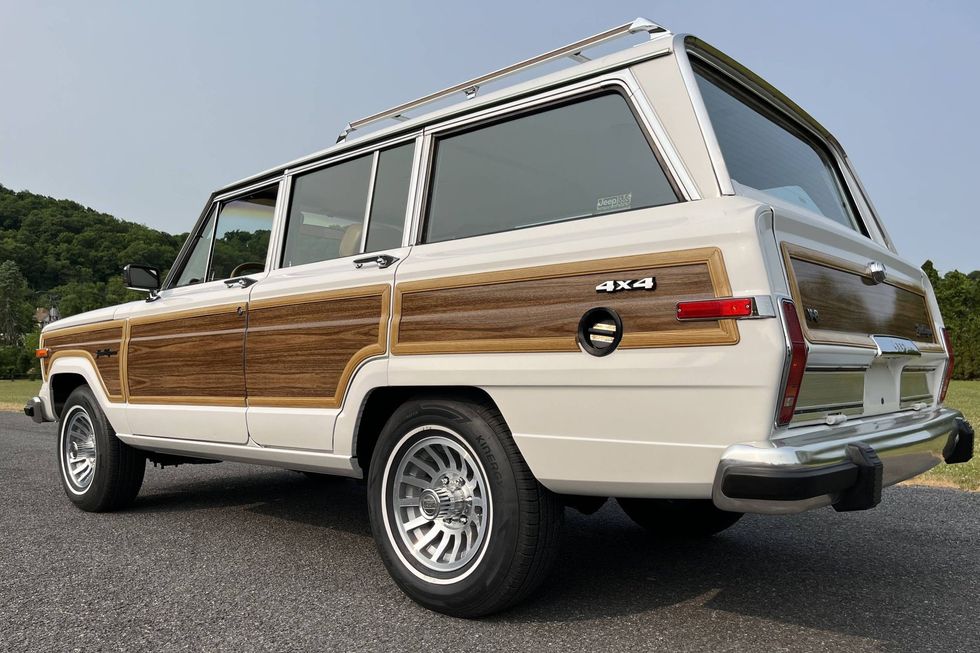
Reserve: $63,000
Selling Price: $68,775
Recent Market Range: $54,000-$75,000
Perhaps no other American vehicle has combined class and off-road capability quite like the original Grand Wagoneer, the trailblazing luxury SUV that was produced by Jeep for almost three decades. This 1988 Jeep Grand Wagoneer was submitted with just 27,417 miles showing on the odometer and plenty of notes from the seller indicating the original condition of the vehicle and all of its major components. The undercarriage, interior and engine bay photos all appeared to show an exceptionally clean example, which is notable for a rust-prone vehicle that has been in the Northeast since new. The net sale price, achieved with the 39th bid, was in line with market expectations for this very collectible vehicle.

Asking Price: $150,000
Selling Price: $157,500
Recent Market Range: $80,000-$150,000
The Land Rover Defender market shows no signs of slowing down, particularly as more and more examples are allowed into the U.S. via the DOT’s 25-year rule for previously banned imports. Likewise, there is a burgeoning market for what can best be described as restomodded examples, like this 1997 Land Rover Defender 110, which was powered by a modern GM LS3 V8, the same powerplant found in later C6 Corvettes. The list of what was original to this SUV might be shorter than what was changed, given the comprehensive nature of the build. Achieved via a direct Make Offer listing, the net sale price of this Land Rover was at the very top end of recent market activity for such customized Defenders.
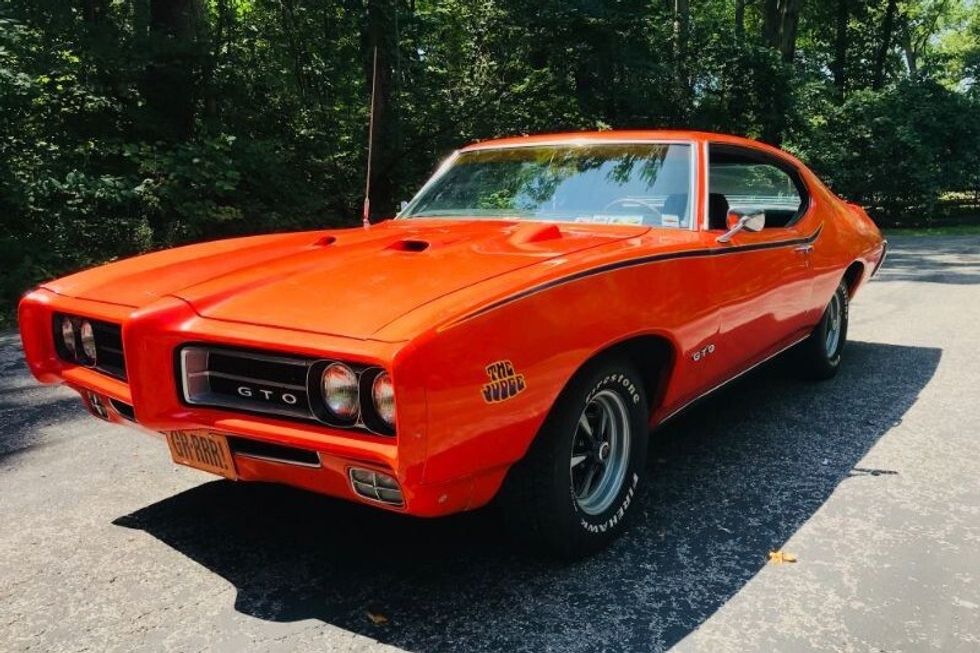
Reserve: $54,000
Selling Price: $52,500
Recent Market Range: $46,000-$62,000
This 1969 Pontiac GTO Judge ticked all the right boxes: matching numbers with photos verification of the partial VIN stamping on the engine block of the original Ram Air III V8, Muncie four-speed manual transmission, PHS documentation, and that classic Carousel Red finish and Judge decals. It looked to be in excellent overall condition, but it also appeared to have been driven and enjoyed some in recent years, with some signs of wear. And the net sale price, achieved via post-auction Make Offer listing, reflected the condition and authenticity of the car. A concours-level example, or one with a rare Ram Air IV engine for example, would likely command a premium over this one.
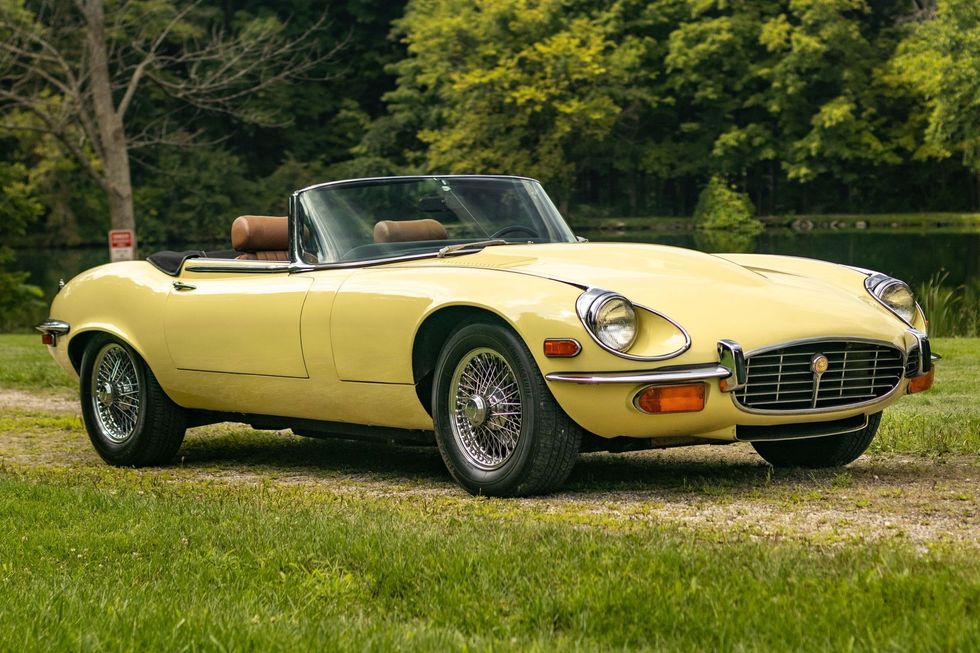
Reserve: $65,000
Selling Price: $69,825
Recent Market Range: $78,000-$115,000
The final iteration of the Jaguar XKE was a bit larger than the original and not as precisely focused on its sporting nature. Rather, with a big V12 under the hood, it was more of a GT car. This 1972 Jaguar E-type Series III Roadster appeared to have some minor wear and tear and signs of road use, but it made up for any shortcomings with what appeared to be an abundance of authenticity. The seller noted that the exterior finish, interior upholstery and engine were all original. Reflecting the low number of owners and the car’s years sitting in a museum, the odometer reading of just over 30,000 miles was also believed accurate. While the net sale price was below market expectations, it was not too far off.
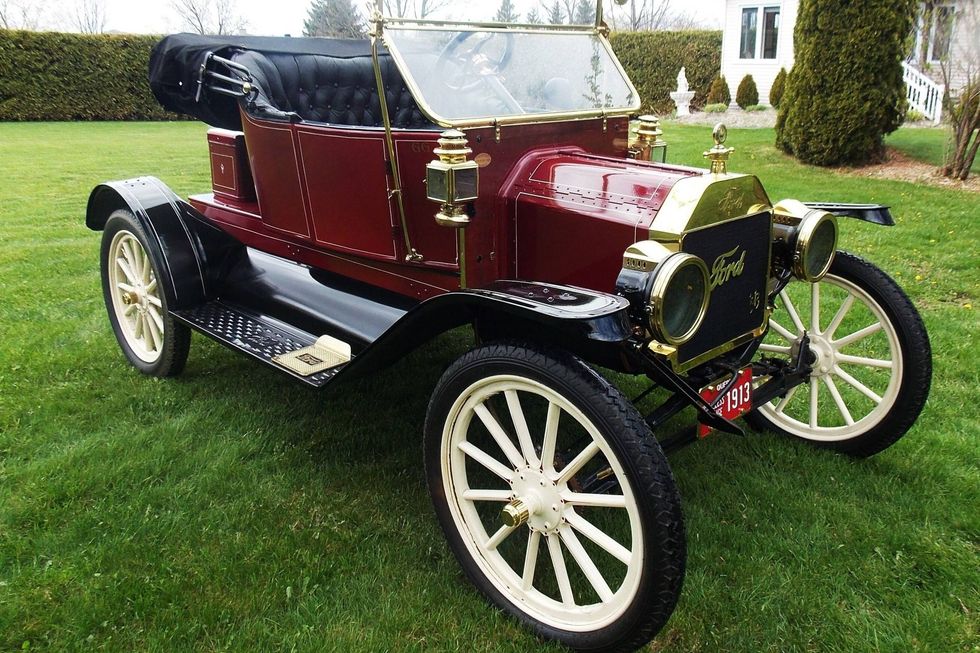
Reserve: $25,00
Selling Price: $26,250
Recent Market Range: $22,000-$36,000
There has never been a shortage of early Fords at Hemmings, dating to the earliest days of our magazine. Like any other vehicle, the most desired examples in the best condition will always attract the bidders. This 1913 Ford Model T Runabout appeared to have been restored to high level and showed only minimal signs of use. It was also equipped with an electric starter. The maroon body, black fenders and white spoke wheels nicely complemented the button-tufted black vinyl seat. The undercarriage appeared to be exceptionally clean, indicating little use for the car that was said to come from a Model T collection. The next sale price was well within the going market rate for an open-top, two-seat, early Model T.